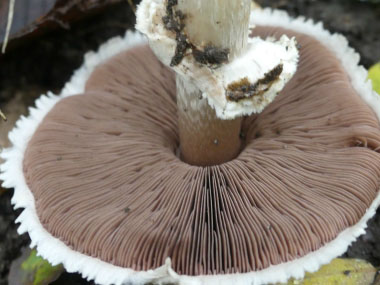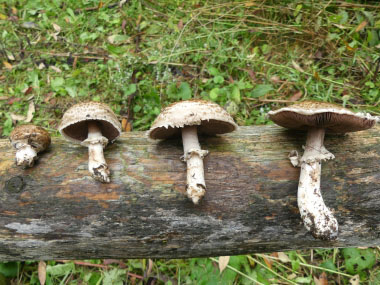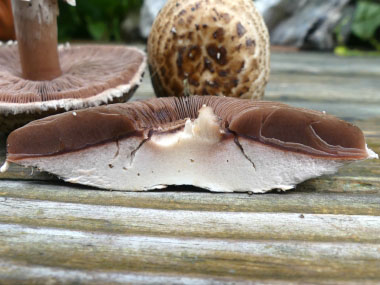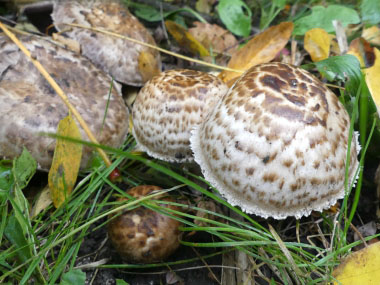






Do not eat any fungi that has not been properly identified by a qualified professional, some are DEADLY when ingested. All edible wild fungi MUST be cooked.
The prince is a distinctive mushroom because of its size, the brownish scales on the cap, the scaly stem, and the strong scent that is similar to almond extract. The prince is a common and popular edible mushroom in many areas around the world. It often appears in summer, particularly in well watered areas. Even when found in the forest, it is generally in disturbed areas, such as campgrounds or along trails or roads.
Type
Distinguishing Features
The cap of the prince is spherical when young becoming convex. Covered in concentric chestnut brown scales on a white to pale yellow background, the cap is quite easy to spot. The cap grows anywhere from 10 to 20cm across. The flesh is white sometimes with a yellow tinge where cut or bruised. The prince also has a large pendulous skirt.
Height
The stem can grow between 10 and 20 cm tall. The stipe (stem) measures between 2 – 4 cm thick. Stems are white to pale cream and smooth above the skirt and usually covered in small brown scales below.
Habitat
These mushrooms can be found along the edges of coniferous and deciduous woodland areas. The prince commonly grows in western North America, and sporadically grows in some areas of Ontario and the north east U.S. They also grow in Central America, Europe, China, Pakistan, Australia and New Zealand. These mushrooms can also be cultivated.
Spore Print
Spore prints are dark purple to a chocolate brown (usually dark brown) and are ellipsoid.
Season
Early summer into late October depending on location.
Gills
Gills start off white to pink and as they mature they become dark brown. Gills are crowded and are not attached to the stem.
Edibility
The prince has a very pleasant distinct smell which some say somewhat resembles almonds. They are edible but as with all wild mushrooms they are to be cooked before consumption. Many who eat these say they are quite tasty.
Other Name
Agaricus julius.
Recipes
To support our efforts please browse our store (books with medicinal info, etc.).
Winter Survival Food Handbook

PDF Plant Magazines
Types of Wild Food
Geographic Zones Seasons
Disclaimer
EdibleWildFood.com is informational in nature. While we strive to be 100% accurate, it is solely up to the reader to ensure proper plant identification. Some wild plants are poisonous or can have serious adverse health effects.
We are not health professionals, medical doctors, nor are we nutritionists. It is up to the reader to verify nutritional information and health benefits with qualified professionals for all edible plants listed in this web site. Please click here for more information.
Why Edible Wild Food?
- Food costs are rising
- Free, wild food is readily abundant
- Wild food adds nutrition to your diet
- Wild food can help treat various medical conditions







